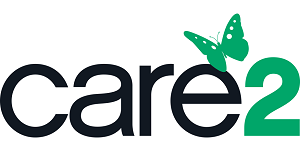
Randy Paynter, Founder and CEO of Care2
Special to the Philanthropy Journal
By Randy Paynter
Each year, my company, Care2, conducts a comprehensive survey that explores digital trends in the nonprofit space. This year marked our 5th annual edition of the project, which is called “The Digital Outlook Report.”
 To kick things off for our 2019 Digital Outlook Report, we (along with our project partners hjc and NTEN) first sent out a lengthy questionnaire to nonprofit leaders from over 20 countries. We asked respondents to tell us about their team structures, tools, strategies and key programs. We also asked them to what degree they felt these elements of their organizations are working—or not, and why.
To kick things off for our 2019 Digital Outlook Report, we (along with our project partners hjc and NTEN) first sent out a lengthy questionnaire to nonprofit leaders from over 20 countries. We asked respondents to tell us about their team structures, tools, strategies and key programs. We also asked them to what degree they felt these elements of their organizations are working—or not, and why.
Afterward, we began to carefully assess the hundreds of responses that came in. Very quickly, we saw a noticeable trend emerge for 2019: While most non-profit organizations have now increased their digital spend, there is a noticeable lack of knowledge, across the board, on how these digital programs actually work and perform. Many respondents at all levels said they did not know what other teams in their organization are doing digitally. They also reported they were not privy to their organization’s overall digital strategy.
Meanwhile, executives couldn’t answer questions about digital marketing tools. Fundraising staff couldn’t identify the structure of their marketing and communications teams—and vice versa. And perhaps most concerning, some marketers weren’t sure how their own efforts were performing—especially when it came to ROI. There were a stunning number of “unknown,” “don’t know,” and “N/A” responses to questions about ROI & digital campaign performance.
While concerning, this is certainly not all bad news. After all, our report showed that nearly 73 percent of respondents have significantly built out their digital program budgets. Some have even spent 100 percent of their marketing budget on digital strategies. (In 2015, that number was between 20-40 percent.) These numbers signify that the toughest part is over: organizational buy-in has happened. At the highest level, nonprofits realize how important digital technology is—and will be—to success. The groundwork is laid, and now for nonprofits, it’s time to sow the seeds and reap the rewards.
I’m the founder and CEO of an online social action network with over 50 million members. Over the past 20 years, we have worked with thousands of nonprofits and socially-conscious brands to help them recruit and connect with new donors, members, supporters and customers. From my standpoint, I’m sure that nonprofits are currently primed to yield particularly worthy outcomes by increasing acquisition efforts, investing in high-return digital marketing tactics and providing members with more personalized experiences. Here’s how:
In some form, you should be running P2P. A recent Accenture survey showed that 60 percent of donors and volunteers value a personalized experience when interacting with nonprofits. The bigger picture snapshot is that consumers in every sector around the globe are increasingly demanding a more personalized experience. For instance, according to the global market research group McKinsey, peer-to-peer marketing is currently the leading driver behind 20-50 percent of all purchasing decisions. P2P is a trend that will undoubtedly continue to grow with the global proliferation and adoption of mobile, social and digital.
And yet, peer-to-peer fundraising, or P2P, is not being embraced at all by 44 percent of respondents from our survey. In some form, all forward-looking nonprofits should be running P2P.
Still not convinced? Even Facebook is getting in the game. Last year, the social media giant released its new fundraising functionality. If Facebook is doing it, we can be sure it is primed to go mainstream.
Bonus tip: Meanwhile, Google debuted its Google Grants platform over a decade ago and it is still not widely known. The tool offers online services designed to help nonprofit organizations. Google Grants is an underutilized platform that anyone on your team can learn quickly to use, and is highly recommended behind our Digital Outlook Report team.
Invest in the set up and training of your staff in analytics. During this year’s survey, one organization in particular shared with us that they were seeing $12:$1 ROI in direct conversions from their social media lead generation efforts, which is a very high yield. Then to top it off, when our research team dug deeper into this case, they discovered that with the addition of assisted conversions and value of leads acquired, the ROI was in fact even higher, at $18:$1. Compare this to the standard $4-5 per follower goal, which hjc has found that nonprofits should be hitting with these types of acquisition efforts. Based on this outstanding performance, this nonprofit should have been ramping up their efforts, knowing they were performing at above industry levels.
On the flipside, if ROI was below standards, the team should be working on immediate ways to rejig their program and strategy. For example, we received very few seemingly accurate answers to our survey questions around Google Ads ROI. This is indicative of an overarching lack of analytics knowledge and use across organizations.
The bottom line: If you haven’t yet, invest in the set up and training of your staff in analytics. Make sure reporting ROI is a routine activity in your organization. The nonprofits we surveyed this year reported that they were spending up to $100,000 annually on Facebook and Instagram marketing alone. You cannot know if your efforts are worth it if you cannot measure them.
Find the right technology for your organization and team. One of the nonprofit organizations we surveyed this year told us they recently rolled out a symbolic giving program. Surprisingly, they chose Shopify, a popular e-commerce platform used by millions, to carry this out. Shopify is certainly not the first tool that comes to mind for taking online donations. But, it was the best option for this particular nonprofit’s top supporters, who are older, female and already familiar with e-commerce. It was clearly the right call. The $50,000 (CAD) project paid for itself in 6 weeks.
The lesson here is to dig into the needs, qualities and dynamics specific to your organization, team and supporters. Explore a range of potential solutions and don’t be afraid to think outside the box.
The ever evolving world of advocacy and organizing has more recently been pushed into hyper-speed by the digital revolution. The good news is that most nonprofit organizations have already laid the foundation for bringing more digital competency into their operations. Now, by taking smart, strategic steps to fill in knowledge gaps, empower their teams and kickstart digital programs, organizations are primed to reach their highest potential and see their outcomes in numbers. And, I can’t wait to see the successes that next year’s Digital Outlook Report will reveal.
Randy Paynter is the founder and CEO of Care2, the world’s largest social network for good. Care2 is a network of over 50 million people around the globe standing together, starting petitions and sharing stories that inspire action.




